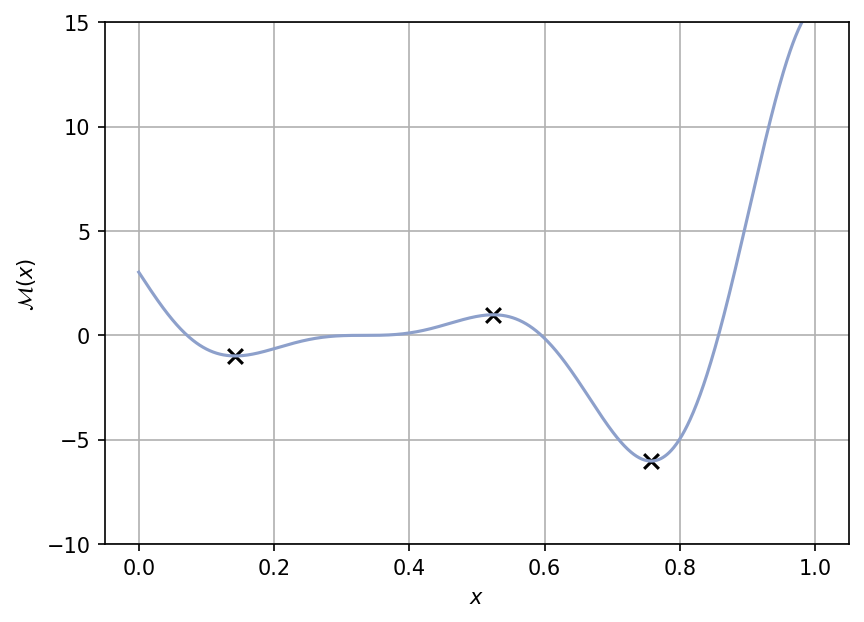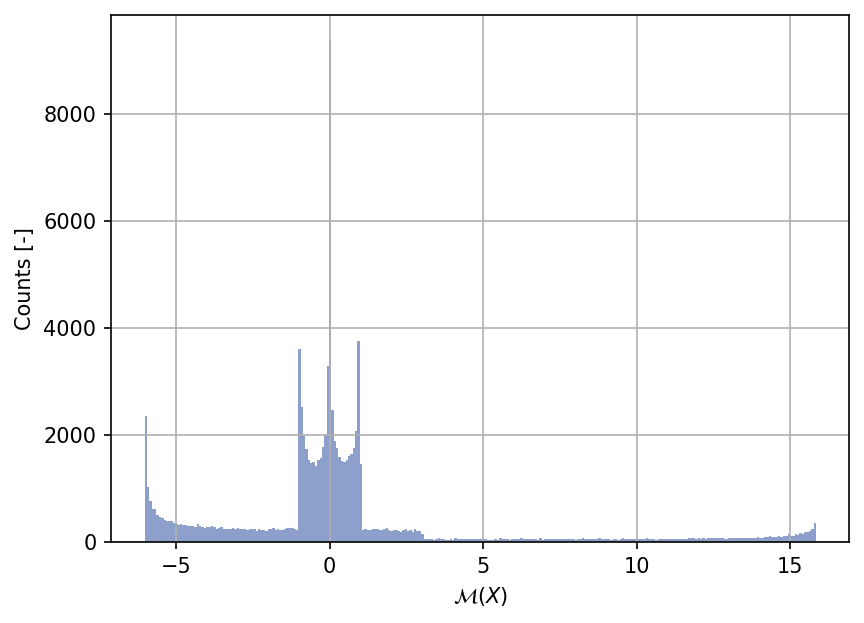One-dimensional (1D) Forrester et al. (2008) Function
Contents
One-dimensional (1D) Forrester et al. (2008) Function#
The 1D Forrester et al. (2008) function (or Forrester2008 function for short)
is a one-dimensional scalar-valued function.
It was used in [FSK08] as a test function for illustrating
optimization using metamodels.
import numpy as np
import matplotlib.pyplot as plt
import uqtestfuns as uqtf
A plot of the function is shown below for \(x \in [0, 1]\).

As can be seen in the plot above, the function features a multimodal shape with one global minimum (\(\approx -6.02074006\) at \(x = 0.75724876\)), one global maximum (\(\approx -0.98632541\) at \(x = 014258919\)), and an inflection point with zero gradient (\(\approx -6.02074006\) at \(x = 0.5240772\)).
Test function instance#
To create a default instance of the test function:
my_testfun = uqtf.Forrester2008()
Check if it has been correctly instantiated:
print(my_testfun)
Name : Forrester2008
Spatial dimension : 1
Description : One-dimensional function from Forrester et al. (2008)
Description#
The test function is analytically defined as follows:
where \(x\) is defined below.
Input#
Based on [FSK08], the search domain of the function is in \([0, 1]\). In UQTestFuns, this search domain can be represented as probabilistic input using the uniform distribution with a marginal shown in the table below.
my_testfun.prob_input
Name: Forrester2008
Spatial Dimension: 1
Description: Input specification for the 1D test function from Forrester et al. (2008)
Marginals:
| No. | Name | Distribution | Parameters | Description |
|---|---|---|---|---|
| 1 | x | uniform | [0 1] | None |
Copulas: None
Reference results#
This section provides several reference results of typical UQ analyses involving the test function.
Sample histogram#
Shown below is the histogram of the output based on \(100'000\) random points:
np.random.seed(42)
xx_test = my_testfun.prob_input.get_sample(100000)
yy_test = my_testfun(xx_test)
plt.hist(yy_test, bins="auto", color="#8da0cb");
plt.grid();
plt.ylabel("Counts [-]");
plt.xlabel("$\mathcal{M}(X)$");
plt.gcf().tight_layout(pad=3.0)
plt.gcf().set_dpi(150);

Optimum values#
The optimum values of the function are:
Global minimum: \(\mathcal{M}(\boldsymbol{x}^*) \approx -6.02074006\) at \(x^* = 0.75724876\).
Local minimum: \(\mathcal{M}(\boldsymbol{x}^*) \approx -0.98632541\) at \(x^* = 014258919\).
Inflection: \(\mathcal{M}(\boldsymbol{x}^*) \approx -6.02074006\) at \(x^* = 0.5240772\).
References#
- FSK08(1,2)
Alexander I. J. Forrester, András Sóbester, and Andy J. Keane. Engineering Design via Surrogate Modelling: A Practical Guide. Wiley, 1 edition, 2008. ISBN 978-0-470-06068-1 978-0-470-77080-1. doi:10.1002/9780470770801.

